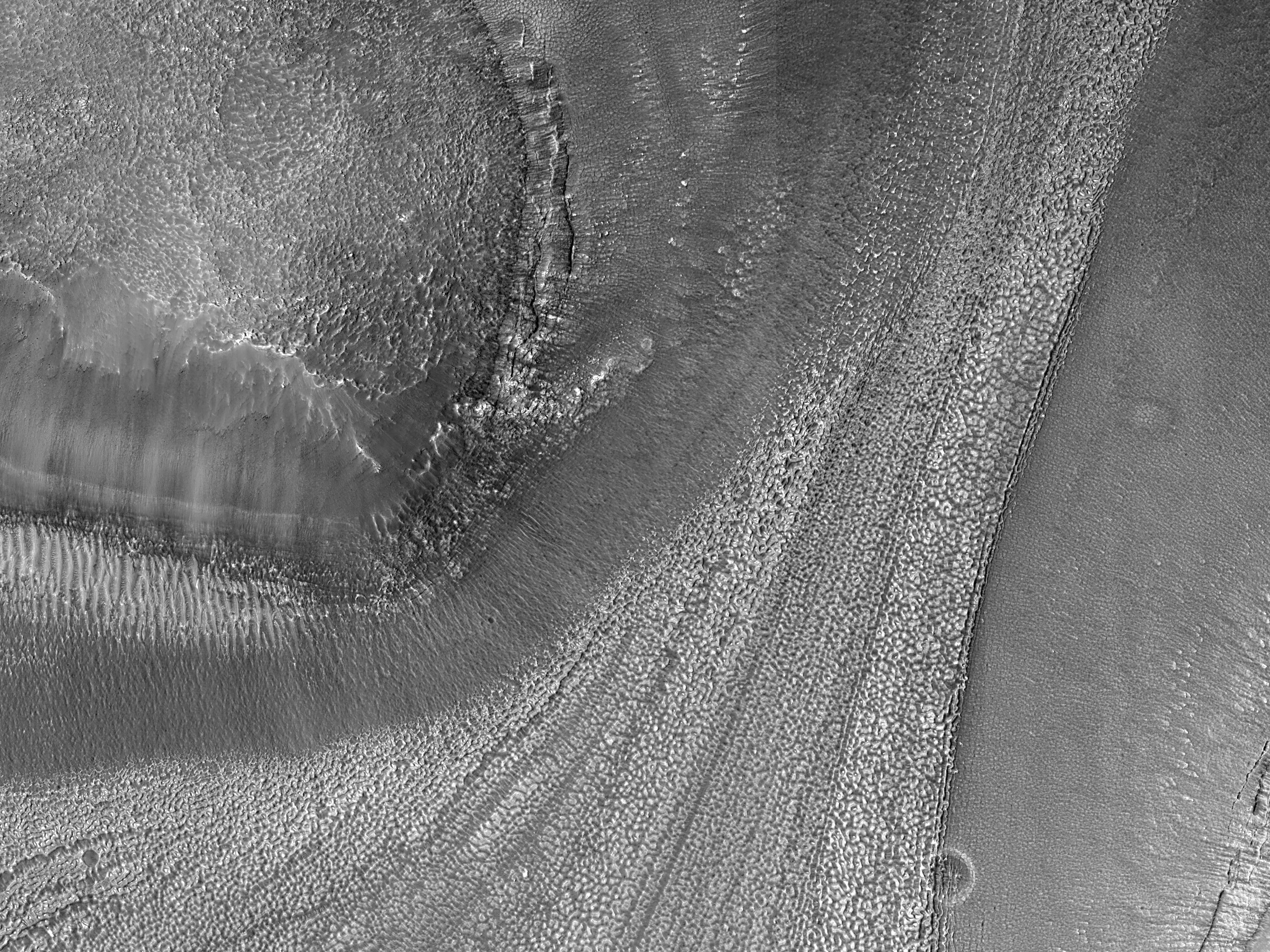Glaciers on Earth flow at speeds that we can easily measure, sometimes even surging to move 100 meters (300 feet) a day! However, glacial flow on Mars is likely to be much slower.
Cold ice on Mars is much more viscous than the warmer ice we have on the Earth and so it flows slower. The gravity is only a third of the Earth’s, so the forces making the ice flow downhill are also lower.
Despite these difficulties, Mars has a lot of glacial-like features that look like they’ve flowed considerable distances. Are they flowing today? HiRISE takes images such as this one to try and answer this question. In our image, we see that ice has apparently flowed from one crater to another through a narrow constriction. Constrictions like this should cause the ice to speed up and maximize our chances to see changes.
Scientists compare images like this one (from March 2025) to earlier HiRISE images (this site was
first imaged by HiRISE in March 2008). This images matches the original lighting and viewing angles, which will make it easier for us to see any changes.
ID:
ESP_087298_2175date: 11 March 2025
altitude: 295 km
https://uahirise.org/hipod/ESP_087298_2175
NASA/JPL-Caltech/University of Arizona
#Mars #science #NASA
